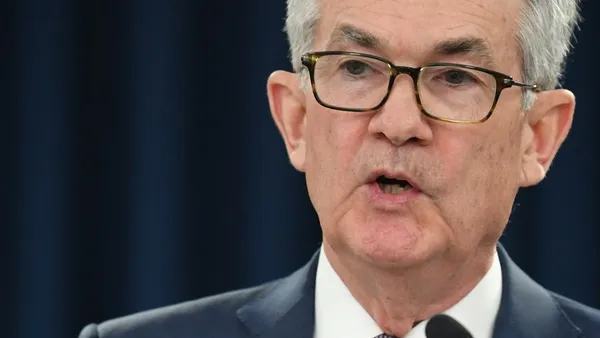Dive Brief:
- A bipartisan group of senators has introduced legislation aimed at averting market turmoil by guiding the transition of trillions of dollars of financial contracts from the London Interbank Offered Rate (LIBOR) to a new reference rate. The bill focuses on contracts that face a June 2023 cessation of LIBOR while lacking fallback language identifying a substitute benchmark rate.
- “As LIBOR is phased out, Congress must provide much-needed clarity to banks, borrowers, consumers and investors regarding the interest rate on certain existing contracts that reference LIBOR,” according to Sen. Pat Toomey, R-Pa., the ranking member on the Senate Banking Committee. Committee Chairman Sherrod Brown, D-Ohio, and two other senators on the panel are co-sponsoring the bill.
- The Economic Continuity and Stability Act would create a safe harbor for contracts lacking a replacement rate for LIBOR and direct the Federal Reserve, when necessary, to determine a new benchmark rate. The Fed and its Alternative Reference Rates Committee (ARRC), a panel of financial institutions, favor the use of the Secured Overnight Financing Rate (SOFR).
Dive Insight:
The Fed and other regulators have pushed for years for the phase-out of LIBOR, the reference rate for trillions of dollars in mortgages, derivatives, business loans and other financial contracts worldwide and the subject of a manipulation scandal in 2012.
LIBOR is derived from London banks' estimates of what they would be charged when borrowing from other banks, whereas SOFR is based on overnight repurchase agreements secured by U.S. Treasurys. The final fixings for most LIBOR rates — including one-week and two-month U.S. dollar LIBOR — were made on Dec. 31, but other U.S. dollar tenors may continue until June 30, 2023.
“The transition away from LIBOR to robust reference rates is progressing strongly into 2022,” ARRC said on Feb. 16 after a meeting focused on the transition to SOFR, which it called “a more robust and resilient alternative” benchmark rate.
Use of SOFR is accelerating in cash and derivatives markets, the committee said, noting a shift to SOFR in new loans and securitizations and interest rate swaps and futures.
“SOFR swaps now account for the majority of interest rate risk traded in the outright linear swaps market,” ARRC said, adding that average daily SOFR futures volumes doubled from December until January.
ARRC flagged as one of its priorities the transition of LIBOR-linked financial contracts to a new reference rate prior to June 30, 2023, including support of legislation that provides “a path for legacy contracts that have no effective means to replace LIBOR upon its cessation.”
The House in December passed in a 415-9 vote a bill also aimed at heading off a disruption from financial contracts tied to LIBOR that lack fallback language.
“Without federal legislation to address these contracts, investors, consumers and issuers of securities may face years of uncertainty, litigation and a change in value, creating ambiguity that would lead to a reduction in liquidity and an increase in volatility,” 23 financial industry groups said in a letter to Senate Majority Leader Chuck Schumer, D-N.Y., and Senate Minority Leader Mitch McConnell, R-Ky.
The Securities Industry and Financial Markets Association, Mortgage Bankers Association, U.S.Chamber of Commerce and American Bankers Association are among the signatories.
A panel of top U.S financial regulators warned in December that companies that fail to smoothly transition from LIBOR could face serious legal liability and other risks.
Market participants that do not execute plans for this transition could face significant legal, operational and economic risks,” according to the Financial Stability Oversight Council (FSOC), which includes leaders at several federal agencies, including the Fed and Securities and Exchange Commission.
“The transition away from LIBOR is entering a critical stage,” FSOC said in an annual report on financial risks. “Market participants should act with urgency to address their existing LIBOR exposures and transition to robust and sustainable alternative rates.”















